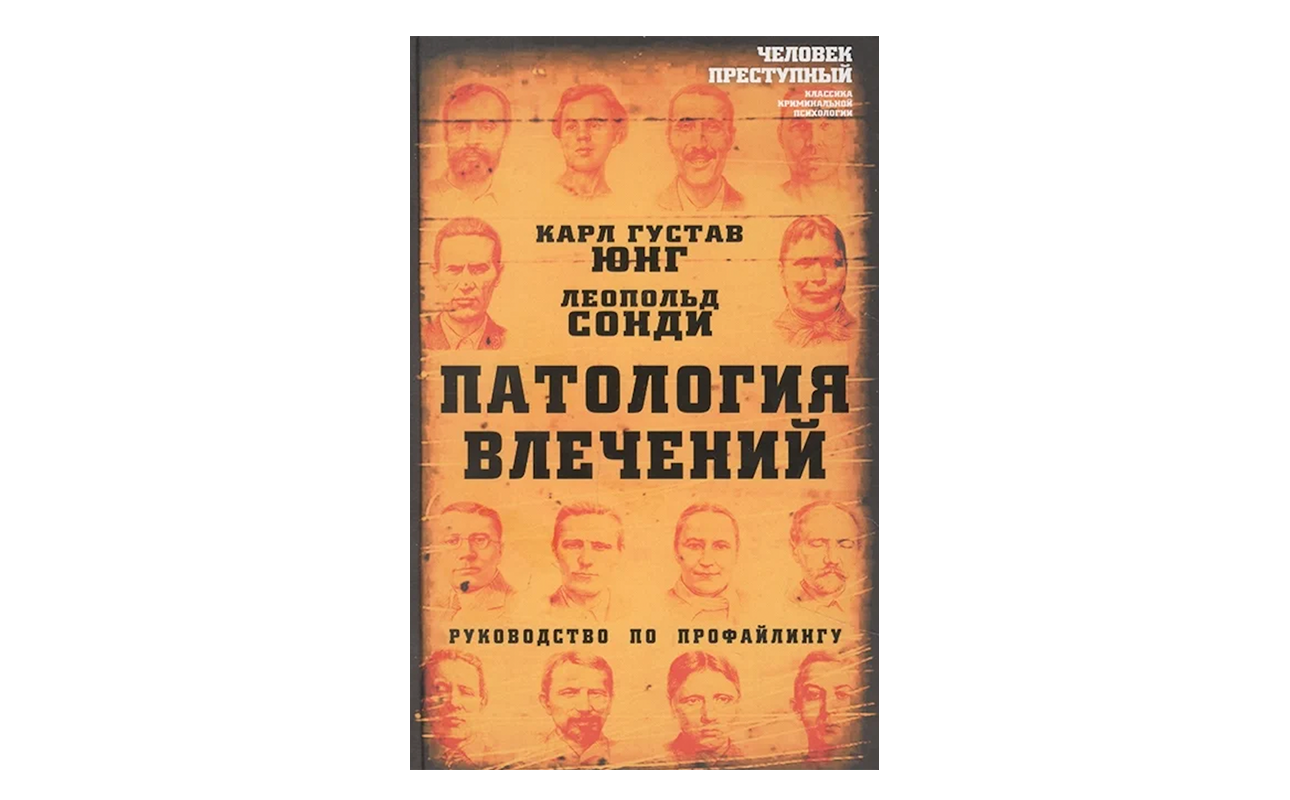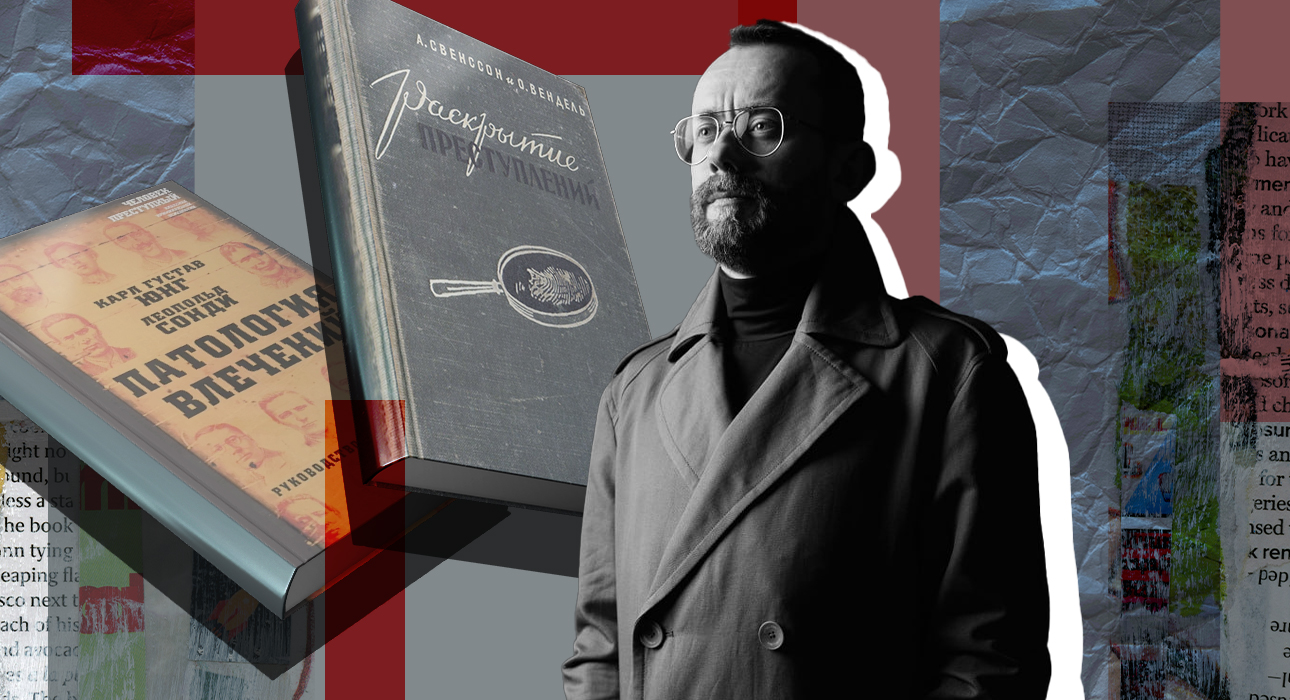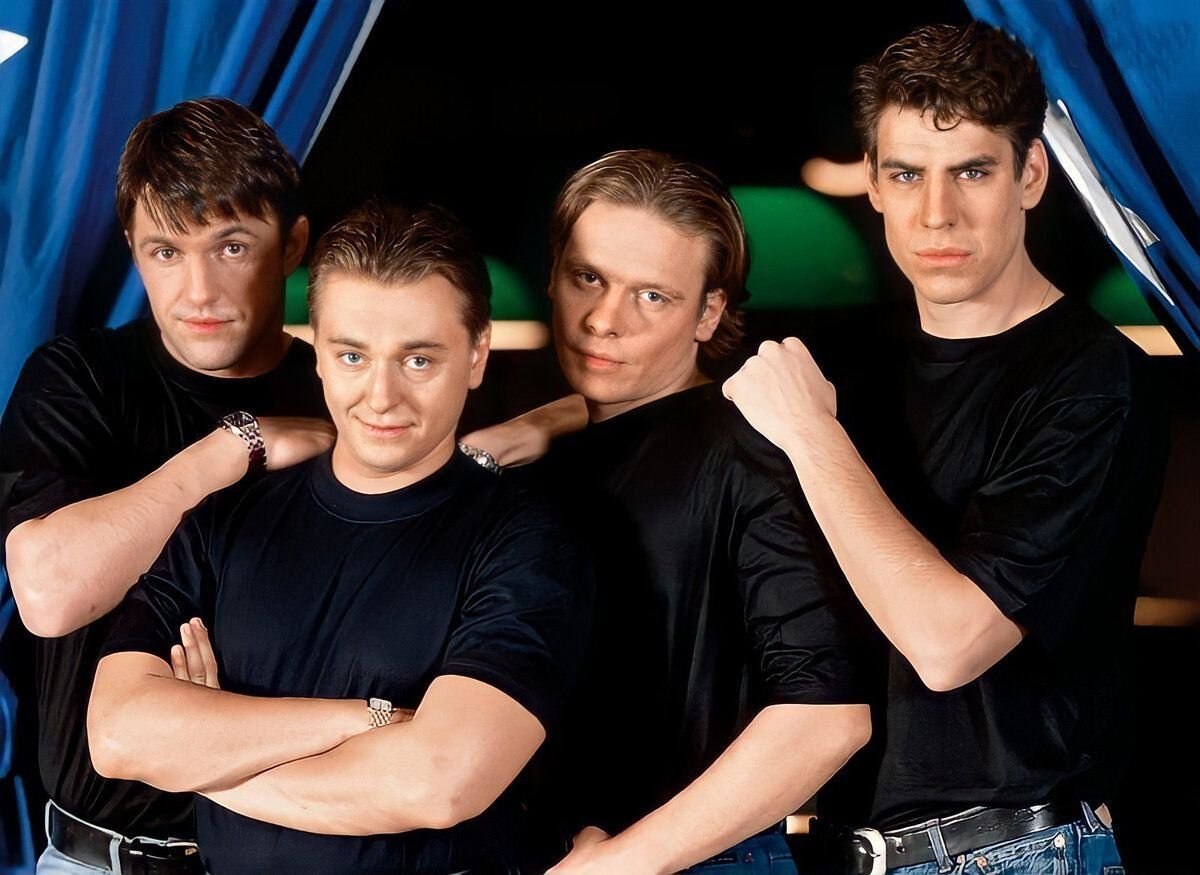Questions about what to watch or what to read can be asked, it seems, endlessly and more than once – after all, any good work, be it a book, movie or TV series, unfortunately, sooner or later ends and leaves. Its audience or reader is in the throes of new searches. But there is some good news, too.
To make your task easier, every week we ask our columnist Konstantin Obraztsov, the writer, author of “Red Chains”, “Hammer of the Witches” and other books, as well as the creator of the “Sample Reading” show on YouTube. (in the past National Internet Content Awards – in 2024 the project won, by the way, in the category “Art of Enlightenment”) and the “Obraztsov” channel in Telegram – to share the diamonds of the best collection of literature and series in the world.

Konstantin Obraztsov
Hardcore, old-school true crime is on today’s agenda.
The enormous popularity of movies and books about maniac killers, profilers, and crime-solving is one of the strangest paradoxes of modern culture.
Today, two or three clicks are enough to find scenes of violence, destruction and death on the Internet that you will never forget for the rest of your life. You don’t even need to look for anything specifically, just subscribe to some news channels. It is even more surprising that in such a media environment, there is a growing interest in true stories about serial killers, the dark labyrinths of the consciousness of dangerous psychopaths and criminal procedures.
The recommended true crime selection is aimed at an educated and knowledgeable reader who is genuinely interested in true crime stories, criminology, and pathological psychology. If you have already memorized the book “The Murderer Sits Opposite” by John Douglas, if you turn on the “Investigation carried out” option, you can immediately retell the biographies of Son of Sam and Ted Bundy, or at least find out who they are. ..” and watch “Mindhunters” again before bed, then these books are for you.
They are unknown to the general reader, they are very difficult to find in paper form, but they can be found in electronic form in the public domain, you have to be a little old-fashioned to read them, but they constitute real classics of classics. non-fiction crime.
Jurgen Thorwald, “One Hundred Years of Forensic Science”

Thorvald studied medicine and history, was a reporter, and gained worldwide fame as a writer with his book The Age of Detectives in 1964 (It was printed and republished in the Soviet Union under the titles “Century of Forensic Science” and “Century of Forensic Science”.) became a real hit in Europe and North America.
The reader can expect real stories of personalities who have become characters in world culture: for example, the criminal and adventurer Francois Vidocq, who created the French criminal police, or Alan Pinkerton, the founder of the famous detective agency. Here are stories about how satirist Henry Fielding and his red-jacketed thugs became the first police officers in England, how Scotland Yard was founded, how they tried to identify criminals before they were fingerprinted, forensics, criminology and much more. seen.
Of course, the most delicious thing is the multitude of true stories about crimes and criminals. There are monsters for every taste: thugs, poisoners, rapists, stranglers, child murderers, sadists; Their sophisticated atrocities are described in harrowing detail, and how the detectives’ science-enhanced insight helps uncover the most cunning of villains.
Personally, from childhood, I remember a story about a serial “black widow” who drowned their partners in the bathtub, leaving no trace of violence or struggle. To uncover the culprit, researchers looked for an experimental method of asphyxiation and eventually found it; It nearly killed the experimental subject. It turned out that a person lying in the bathtub instantly lost consciousness and drowned…
In general, you will not forget this method and you will remember it every time your man comes to you while you are taking a bath.
A. Svensson, O. Wendel, “Crime Solving”
The book was written by two real detectives: a senior criminal investigator with the Stockholm police and an employee of the Swedish National Institute of Forensic Medicine. The subheading of the title reads: “Modern Methods of Criminal Investigation” and these were strictly aimed at the early post-war years. But this does not spoil the impression: the text easily allows you to imagine yourself as an employee of the Swedish criminal police in the early 50s, arriving at the scene of the crime.
Despite the fact that the book was created as a real manual for police officers, it was published in the Soviet Union by the Foreign Literature publishing house for ordinary readers, not specialists. This is due, firstly, to the simple and vivid style of presentation, and secondly, to the numerous frightening and exciting examples of real crimes, murders and suicides.
You can completely skip car theft, searching for shoe prints in dust and blood, collecting buttons and cigarette ashes, or chemical composition tables of gunpowder. But the sections “Causes of Death” and “Identification of a Corpse” will not leave lovers of hardcore documentary films indifferent: you will learn everything about hardness, postmortem changes in the eyes, cadaveric stains, peeling of the skin on the hands. drowned people, you will understand how to calculate the time of death from fly larvae on a corpse and what the “boxer pose” is, learn how to correctly remove a hanged man from the noose, and also identify the signs of death from sexual causes. perversion (he says yes).
A special bonus is a large number of photos. Of course, today it is difficult to surprise someone with bloody, murderous photographic content, but neutral black and white photographs of severed skulls, a victim of sadism cut with a razor or the decomposed corpse of a strangled man make a specific and strong impression.
When I was a child, I would stare for a long time at the grainy photograph of the corpse of a suicide bomber with a stick of dynamite exploding in his mouth, trying to find a second ear for him. You can try it too.
Carl Gustav Jung, Leopold Szondi, “Pathology of drives. Profile Creation Guide”

A striking example of how the desire to attract the reader with a catchy title in order to quickly sell the circulation leads to the opposite result: anyone who expects to find under the cover actually popularly outlined certain methods for drawing psychological portraits of homicidal maniacs is left disappointed. There is nothing like this in the book.
But for those who are really interested in pathological psychology, there is a lot of interesting and useful information. Carl Gustav Jung needs no introduction: the first half of the book consists of his now classic essays on psychological types. Anyone interested in psychology in general and in an applied field such as profiling in particular should definitely get to know them.
The author of most of the articles in the collection is Leopold Szondi, who is less known to the public. He is the creator of the psychological theory of fate analysis regarding the influence of the general unconscious on a person’s life path, as well as the Szondi test for determining mental deviations of an individual. Leopold Szondi is indeed considered the pioneer of modern profiling, and in his articles one can see many relevant theoretical premises that will enable a better understanding of the essence of the subject than can be obtained from Michael Ohmer’s books. In addition, it will be interesting and useful for self-knowledge to read about the genetic imposition and personal freedom in a person’s destiny, as well as the division of the personality into various forms of mental pathology.
Or start getting to know your partner. Perhaps this is because his “I” is divided according to the type of schizophrenia.
“Research application” (Publication of the All-Union Institute of the Prosecutor’s Office of the USSR)
Imagine you find yourself in an old abandoned archive. The grayish light of a dim day shines through the window that has not been washed for a long time. On shelves along the walls, from floor to ceiling, dozens of yellowed cardboard folders tied with strings, plump with dusty contents. You pick one of them up at random, unscrew it and open it: inside are piles of typed and handwritten pages, interrogation reports, witness statements, photographs of crime scenes, evidence and dismembered corpses – and you realize you have yourself in your hands. materials of an old criminal case.
Approximately these feelings arise when reading “Research Practice”. Nowadays it is almost impossible to find these special publications in print, and it is not easy to find electronic versions in scanned .pdf format. In Soviet times, they were also inaccessible to the ordinary reader: they were sent by subscription only to employees of investigative institutions with the mark “for official use”, and each issue had its own individual number.
But it’s worth looking at.
This is truly the ultimate, pure documentary in its true form. Each article is a cross between an investigator’s report and material for a master class on solving particularly complex crimes: no unnecessary literary treatments, no artistic embellishments, just facts and photographs. The dry protocol language used to describe mass murders committed with axes, the most brutal rapes and the dismemberment of corpses makes the events even more terrible, adding a terrible shadow to daily life.
Reading “Research Practice” is fascinating with its documentary originality. First of all, the history of criminology is interesting for the investigation procedure and examples of the brilliant logic of investigators, but not only that.
The essence of life and everyday life of the deep Soviet society is revealed to us, completely different from the then propaganda image or the current nostalgic perception of that period. The grass is not greener here, everything is the same black and white here and people are not kinder, they are unhappy and angry. There are no criminal masterminds or charismatic villains, just a sad tale of human evil and greed, with a fair amount of stupidity to boot.
Soviet gothic, from now on stories about the adventures of overseas maniacs will seem like Hollywood fantasy.
Source: People Talk
Errol Villanueva is an author and lifestyle journalist who writes for The Fashion Vibes. With a passion for exploring the latest trends in fashion, food, travel, and wellness, Errol’s articles are a must-read for anyone interested in living a stylish and fulfilling life.





